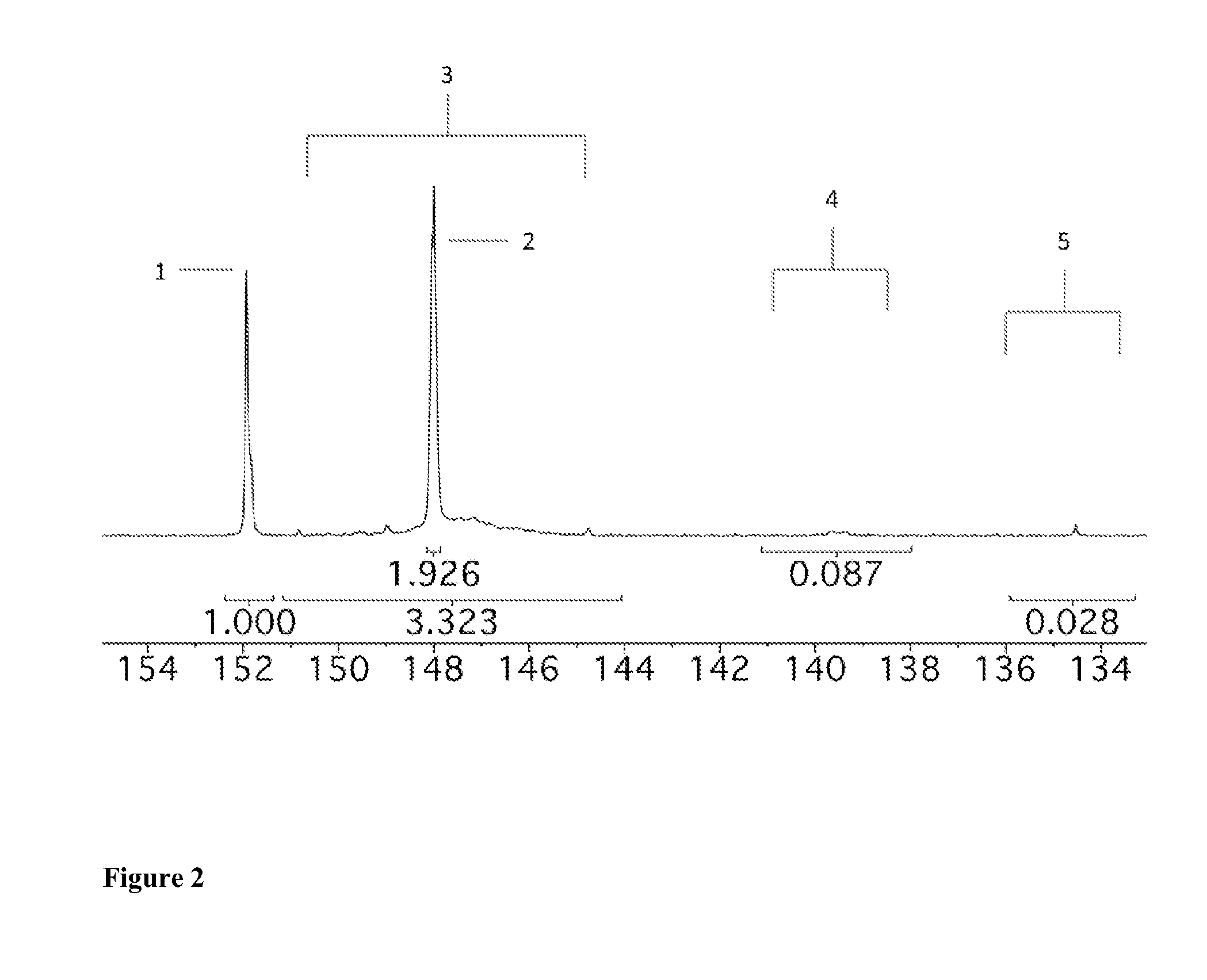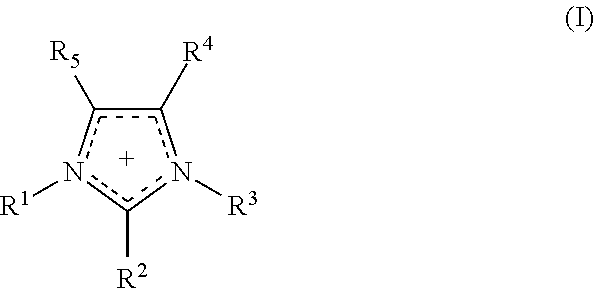Process for fibrillating lignocellulosic material, fibres and their use
- Summary
- Abstract
- Description
- Claims
- Application Information
AI Technical Summary
Benefits of technology
Problems solved by technology
Method used
Image
Examples
example 1
Preparation of 1-methyl-3-methylimidazolium dimethylphosphate ([mmim]Me2PO4)
[0070]A mixture of 1-methylimidazole (50 ml, 0.519 mol) was added over a space of 4 hrs to trimethylphosphate (60.7 ml, 0.519 mol) at 100° C., with stirring. The solution was heated at 100° C. for a further 18 hrs. The reaction of the mixture was determined to be complete by analyzing a sample by 1H NMR from CDCl3. The mixture was rotary evaporated under high vacuum for 18 hrs to give a pale yellow oily product (110 ml). The purity of the product was determined to be >99% by 1H NMR analysis.
example 2
Preparation of 1-ethyl-3-methylimidazolium dimethylphosphate ([emim]Me2PO4)
[0071]A mixture of 1-ethylimidazole (50 ml, 0.519 mol) was added over a space of 4 hrs to trimethylphosphate (60.7 ml, 0.519 mol) at 120° C. with stirring. The solution was heated at 120° C. for a further 18 hrs. The reaction of the mixture was determined to be complete by analyzing a sample by 1H NMR from CDCl3. The mixture was rotary evaporated under high vacuum for 18 hrs to give a pale yellow oily product (110 ml). The purity of the product was determined to be >99% by 1H NMR analysis.
example 3
Preparation of 1-ethyl-3-methylimidazolium methylhydrogenphosphonate ([emim]MeHPO3)
[0072]A mixture of 1-ethylimidazole (50 ml, 0.519 mol) was added over a space of 4 hrs to diethylphosphite (47.6 ml, 0.519 mol) at 140° C. with stirring. The solution was heated at 140° C. for a further 18 hrs. The reaction of the mixture was determined to be complete by analyzing a sample by 1H NMR from CDCl3. The mixture was rotary evaporated under high vacuum for 18 hrs to give a pale yellow oily product (97 ml). The purity of the product was determined to be >99% by 1H NMR analysis.
PUM
| Property | Measurement | Unit |
|---|---|---|
| Temperature | aaaaa | aaaaa |
| Temperature | aaaaa | aaaaa |
| Responsivity | aaaaa | aaaaa |
Abstract
Description
Claims
Application Information
 Login to View More
Login to View More - R&D
- Intellectual Property
- Life Sciences
- Materials
- Tech Scout
- Unparalleled Data Quality
- Higher Quality Content
- 60% Fewer Hallucinations
Browse by: Latest US Patents, China's latest patents, Technical Efficacy Thesaurus, Application Domain, Technology Topic, Popular Technical Reports.
© 2025 PatSnap. All rights reserved.Legal|Privacy policy|Modern Slavery Act Transparency Statement|Sitemap|About US| Contact US: help@patsnap.com



